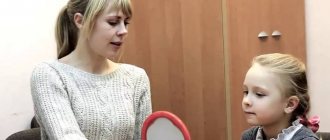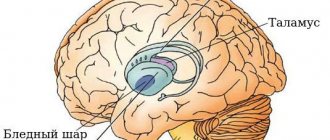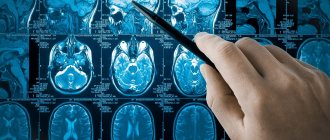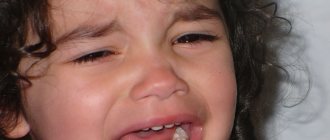Scientific and theoretical foundations of speech therapy
Elena Tashlykova
Scientific and theoretical foundations of speech therapy
SCIENTIFIC AND THEORETICAL FOUNDATIONS OF Speech Therapy.
The scientific and theoretical basis of speech therapy is determined by the pedagogical nature of this science, that is, speech therapy , as well as the essence of its subject, goals, and objectives. The scientific and theoretical foundations include the provisions of various sciences.
The first theoretical basis of speech therapy is the position of psychology - about speech, its types, functions, as well as the connection of speech with other mental processes. Speech is considered as a HMF; therefore, it is provided by the complex structure of the functional system. Speech formation during life depends on the social situation of the child’s development. Speech is the highest mental function, which is the main means of expressing thoughts.
Speech is a voluntary function and in the process of ontogenesis develops from simple forms of oral speech to complex types of speech activity, both oral and written.
Speech is divided into impressive (perception, understanding, reading)
and expressive
(i.e. own speaking, writing)
form. The largest division of speech into types is its division into oral and written, represented by reading and writing. Oral speech is divided depending on the complexity of its construction:
1. Dialogue speech - two or more partners interact.
2. Monologue speech – a coherent speech utterance by one person.
For speech therapy , it is important to identify other types of speech:
-Reflected speech; conjugate speech (choral)
; independent speech.
Speech performs the following functions:
1st basic – communicative function (within the communicative function, informational and regulating speech is distinguished)
. The communicative function of speech appears very first in ontogenesis. It is this function that suffers primarily in various oral speech disorders, but it suffers especially severely in OHP (1-2 level of speech development, open rhinolalia, pseudobulbar dysarthria, stuttering.
2nd function of speech – cognitive (cognitive)
.
Speech begins to be used by a child for cognition at an early age of 3 years (Why)
. Speech becomes a means for the development of thinking.
The 3rd function of speech is metalinguistic. Metalanguage is language, speech is about speech. Using speech to indicate its patterns and rules. The metalinguistic function normally begins to develop in preschool age, this is especially evident at 6-7 years of age and then continues to develop at school age. Its development is facilitated by language learning.
In speech therapy , the use of the metalinguistic function is very important in the process of correcting speech deficiencies in children. This function is formed in children in a complex and time-consuming manner.
First of all, speech is connected with thinking, therefore any underdevelopment of the intellect has a negative impact on the underdevelopment of speech. Manifests itself in children with mental retardation and disability.
Speech is associated with other cognitive processes, namely memory, different types of perception, and imagination. Speech impairment, especially in the form of OHP, negatively affects the development of these cognitive mental processes. Deficiencies in memory, especially operational memory, as well as auditory and visual memory, in turn, complicate speech development (in particular, this negatively affects the development of vocabulary)
.
Deficiencies in visual perception, as well as in the functions of spatial analysis and synthesis, can cause reading and writing disorders.
Thus, the psychological aspect of the theoretical basis of speech therapy is important :
Firstly, for the correct approach to distinguishing impaired speech development from normal speech development or from ontogenesis.
Secondly, to implement a systematic approach to the diagnosis and correction of speech disorders.
Thirdly, to take into account the role of other mental functions in the correction and development of speech (in particular, taking into account the personal component, that is, the attitude of a child or adult to his deficiency and the motivation for correctional work to overcome this disorder).
The second theoretical basis of speech therapy is the position on the anatomical and physiological foundations of speech .
According to this position, speech is realized by complex structural formations or functional systems into which the central and peripheral sections are combined.
The central section is represented by the brain, cerebral cortex, subcortical and stem formations, the main function of which is to program and clarify programs for various speech actions.
The frontal prefrontal regions of the cerebral cortex provide general semantic programs for speech utterances, their sequence, purposefulness and control. The temporal regions of the cortex of the left hemisphere provide phonemic perception, therefore, the recognition of linguistic units in oral speech. The motor departments provide the choice of articulatory programs and switching from one articulation to another during the speaking process. The occipital cortex of the left hemisphere performs the function of letter discrimination. Pathways connecting the cerebral cortex with the nuclei of the cerebral nerves (located in the medulla oblongata)
ensure the transmission of speech motor programs, the clarification of which occurs in the cerebellum
(motion coordination)
.
From the nuclei of the brain nerves begins the peripheral path to the executive organs, to the peripheral muscles of the peripheral apparatus (respiratory, vocal, articulatory)
. The vagus nerve regulates respiratory function. The glossopharyngeal and vagus nerves are the muscles of the larynx and vocal folds, pharynx and soft palate. In addition, the glossopharyngeal nerve is the sensory nerve of the tongue, and the vagus nerve innervates the muscles of the respiratory and cardiac organs. The trigeminal nerve innervates the muscles that move the lower jaw. Facial nerve - facial muscles, including the muscles that carry out lip movements, puffing out and retracting the cheeks. The accessory nerve innervates the muscles of the neck. The hypoglossal nerve supplies the muscles of the tongue with motor nerves and gives it the possibility of a variety of movements.
Through this system of cranial nerves, nerve impulses are transmitted from the central speech apparatus to the peripheral one. Nerve impulses move the speech organs.
The peripheral speech apparatus consists of three sections: 1) respiratory; 2) voice; 3) articulatory (or sound-producing)
.
The respiratory section includes the chest with the lungs, bronchi and trachea. The vocal section consists of the larynx with the vocal folds located in it. The main organs of articulation are the tongue, lips, jaws (upper and lower, hard and soft palate, alveoli. Of these, the tongue, lips, soft palate and lower jaw are mobile, the rest are fixed. Thus, the anatomical and
physiological principles give an idea of the normal structure speech functional system, which is important both for the diagnosis and correction of speech disorders, with simple defects in sound pronunciation, and with complex disorders such as stuttering, sensory and motor alalia.
The 3rd basis is the psycholinguistic basis .
Psycholinguistics studies speech activity from the point of view of the relationship between the processes of speech production and speech perception in connection with the personality, that is, it studies the features and patterns of language use in the speech activity of the individual. From a psycholinguistic point of view, an assessment is made of the role of motivation in speech activity, the role of conditions that contribute to increasing the child’s speech motivation, and the role of communicative and social factors in overcoming speech deficiencies. In the same direction, mechanisms of self-control and self-correction of speech deficiencies are considered.
4th neuropsychological basis for understanding the brain organization of speech.
Neuropsychology provides information about the current understanding of the brain mechanisms of speech disorders.
For example: it has been established that writing impairment in primary schoolchildren can be caused not only by specific deficiencies in phonemic perception, hearing, visual-spatial analysis and synthesis, but also by the immaturity of regulatory mechanisms that are provided by the third functional block of the brain. In this connection, the regulatory form of dysgraphia is distinguished. For example, T.V. Akhutina (2001)
from the perspective of a neuropsychological approach, she identified variants of writing difficulties that are often found in children, but mechanisms that are rarely discussed in
speech therapy (pedagogical)
literature.
In particular, the author identified writing difficulties of the type of regulatory dysgraphia, caused by the immaturity of voluntary regulation of actions (planning and control functions)
.
5th neurological basis of speech pathology (neuropathology and psychopathology)
.
Data from neuropathology and psychopathology are taken into account in the analysis of speech disorders in the clinical picture of various neurological and psychiatric disorders: stuttering, aphasia-type speech breakdown, with RDA, with early forms of schizophrenia, with stroke.
The 6th theoretical basis of speech therapy is linguistic provisions about the phonetic, lexical, and grammatical systems of the language; about the laws of structure and rules of use of linguistic means. Linguistic foundations are important for determining the content and sequence of work on various language units and various language activities.
For example: garden-garden-gardener. (word formation)
The 7th theoretical basis of speech therapy is the provisions of special psychology on the structure and patterns of dysontogenesis for the theory and practice of speech therapy .
According to the provisions of special psychology, a deficiency of one impaired function, in this case speech, is considered a primary defect. In the absence or insufficient effectiveness of correctional work, this primary defect can cause secondary disorders: a delay in intellectual development, distortions in personality development.
The provisions of special psychology are important for the correct assessment of the relationship between the current level of development of a child with a speech disorder and his potential capabilities, subject to the provision of special correctional assistance.
The 8th basis of speech therapy is the pedagogical foundations of raising and teaching children with speech disorders:
Special correctional pedagogy is a generic concept of speech therapy , therefore speech therapy uses all the principles of correctional pedagogy. She uses methods adopted in special pedagogy for teaching and raising children with speech disorders.
Thus, the scientific and theoretical foundations of speech therapy are interdisciplinary in nature, which can be designated as clinical-psychological-pedagogical , anatomical-physiological and linguistic.
When did the direction originate?
The history of speech therapy does not have an exact date of origin, but goes back several thousand years. We can distinguish four stages in the development of this direction (independent today) of correctional pedagogy. As the industry's development trend demonstrates, it was formed on the basis of knowledge acquired by medicine and pedagogy, and therefore has a direct connection with them.
Scientific knowledge of speech disorders and the discovery of methods for their correction began not so long ago, when medicine became aware of the basic mechanisms of the anatomical and physiological aspects, thanks to which a person is able to carry out speech activity. Around the middle of the 19th century, the first notes appeared on the theory of speech disorders, the author of which was the neuropathologist P. Brock. A little later, another neurologist, K. Wernicke, published his scientific work describing the center of the sensory side of speech capabilities.
We recommend: Stuttering: causes and treatment
Both of these works gave rise to much controversy and debate regarding the mechanisms that support the speech system. It is worth noting that this scientific conflict has become an excellent pretext for collecting new data and knowledge about possible disorders of human speech activity.
In this regard, the results of studies of speech disorders gradually began to appear, which were carried out for experimental purposes not only by neurologists, but also by linguists, psychologists, physiologists, teachers and other specialists.
Thus, speech therapy as a science arose gradually, against the backdrop of the development and improvement of other sciences. And now, being an independent branch of correctional pedagogy, speech therapy is not isolated from other areas. Moreover, it closely interacts with other areas of scientific knowledge of individuals.
In the vastness of Russia, a breakthrough in the development of speech therapy was the event when the state decided to provide assistance to children with speech disorders. In the not-so-distant year 1917, special decrees were issued on the need to include preschool and school institutions (including private ones) in the general education system of the Soviet people.
We recommend: Science defectology
Leading Soviet authorities were involved in the coordination of these documents. Thanks to these decrees, which encouraged the government to take a closer look at the issue of providing assistance to children with speech defects (including abnormal ones), fundamental changes were laid in the field of organizing educational and training processes.
Recommendations
Textbooks on speech therapy for students of defectology departments of pedagogical educational institutions. The books describe in detail the basic concepts of the theory and practice of speech therapy, the principles of speech therapy work. An analysis of sources on sections of speech therapy, basic methods of correctional and speech therapy work on various speech disorders, a general system of work, and preventive measures are provided. To consolidate the topics being studied, questions on the topic and a list of additional specialized literature are proposed. Authors: T. B. Filicheva, N. A. Cheveleva, G. V. Chirkina. The textbooks meet the requirements of the speech therapy program.
1. Fundamentals of speech therapy work with children : A textbook for speech therapists, kindergarten teachers, primary school teachers, and students of pedagogical schools.
2. Fundamentals of speech therapy : A textbook for students of pedagogical institutes in the specialty “Pedagogy and psychology (preschool)”.






